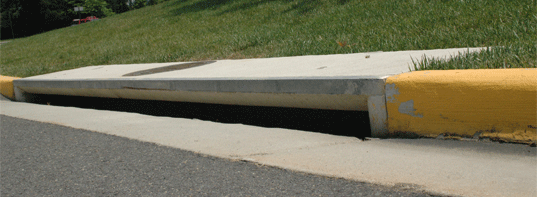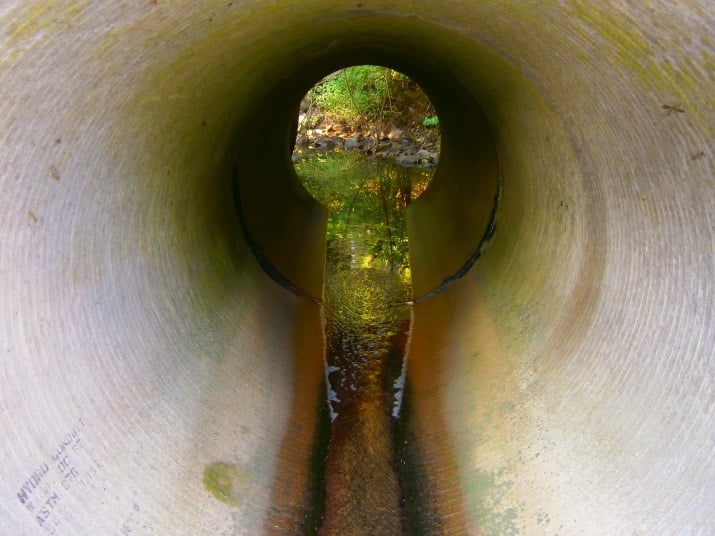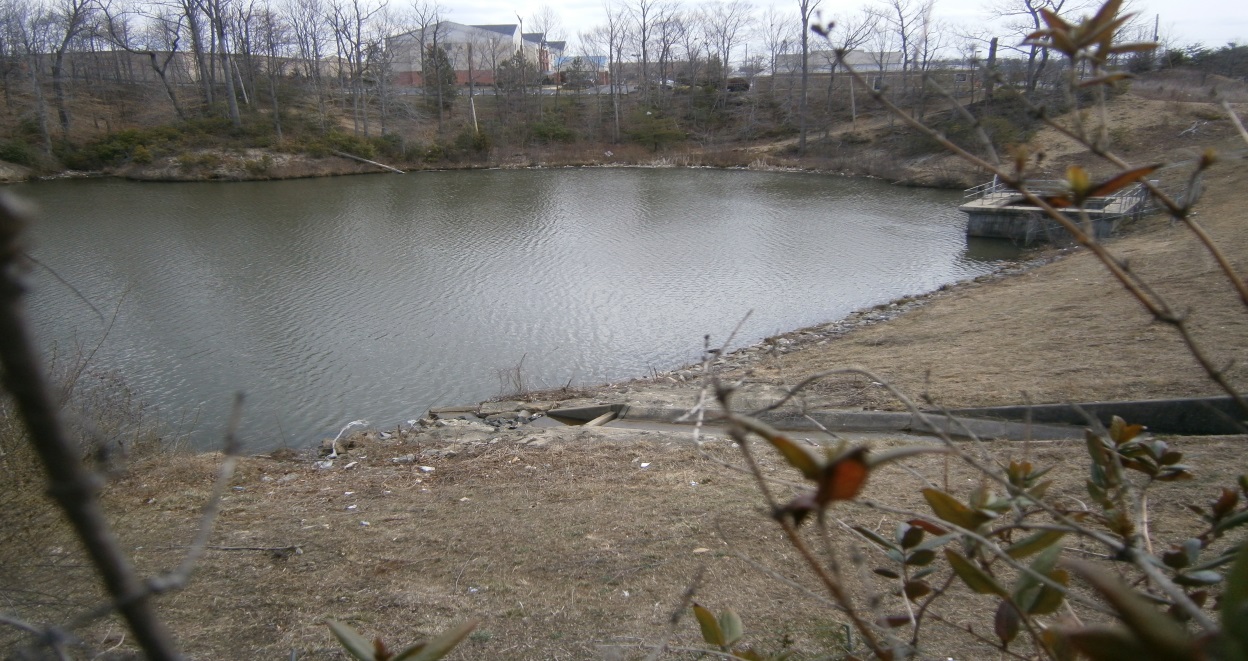Skip to content

Pipes, Culverts, and Ditches


Storm Water Runoff
Storm Water Runoff occurs when precipitation from rain or snowmelt flows across the ground over impervious surfaces like roadways, driveways, parking lots, and building rooftops which do not allow this water to soak into the ground. In natural areas where the soil has not been covered, storm water runoff soaks into the soil and may be taken up by plants, or enter the groundwater table.
Why is urban storm water runoff Important?
Uncontrolled urban storm water can cause flooding and erosion problems leading to unnecessary stress and damage to waterways, private property, and important infrastructure. Storm water runoff picks up debris, chemicals, dirt, and other pollutants and transports them into the storm drain system. This water is then discharged untreated to nearby lakes streams and rivers. It can severely pollute the water bodies we use for swimming, fishing, and providing drinking water.

Storm Drain System
An effective storm water system controls the quantity, quality, distribution, and transit time of storm water after a rain event in order to effectively protect the environment, infrastructure, and most importantly, the health and safety of those living around them.
The storm drain system is made up of several components:
Drains and Drop Inlets
Storm drains are the devices that catch storm water and allow it to enter the storm drain system. These are typically seen as rectangular openings in the curb or grated drop inlets found in many grassy areas or parking lots. They can be found almost everywhere in Prince William County, especially in urban areas with large amounts of impervious surfaces, such as roads and parking lots.
Pipes, Culverts, and Ditches

In order for storm water to get from storm system inlets to its final destination, it must travel through a network of pipes, culverts, and ditches. These structures are often hidden underground or sit beside roadways, parking lots, and sidewalks. Structures can be constructed from various materials including grass, corrugated steel, concrete, stone, and asphalt. Prince William County’s MS4 system contains over 11,000 miles of these structures which are integral to the movement of storm water from point A to point B.
Outfalls
Storm water outfalls dispense water from the pipes, culverts, and detention ponds into County streams, ponds, and rivers. At these outputs of the storm drain system, the County assesses the discharge of pollution from various sections of the system. Outfalls range from sizes as small as 6 inches to greater than 120 inches, and come in many shapes.
Storm Water Management (SWM) Ponds and other BMPs
Detention and retention ponds are Storm Water Management (SWM) facilities designed to control the release of storm water in order to prevent
large volumes of water from entering our streams and rivers too quickly which can cause significant damage from erosion. Storm water ponds can be designated into two basic categories: Detention ponds (Dry ponds) which are designed to hold water for a limited period of time after storm events in order to control the quantity of water released during peak storm flows, dry ponds are mainly used for flood and erosion control; and retention ponds (Wet ponds) are designed to hold water at all times. In addition to helping with flood and erosion control, these structures provide some improvement in water quality by allowing for suspended sediment and nutrients to settle from the water column. In addition to SWM facilities, various other BMPs exist which are designed to filter or mitigate pollutants from entering the storm sewer system. These include infiltration trenches, curb inlet filters, Filter boxes, Stormceptors, oil water separators, and more.
large volumes of water from entering our streams and rivers too quickly which can cause significant damage from erosion. Storm water ponds can be designated into two basic categories: Detention ponds (Dry ponds) which are designed to hold water for a limited period of time after storm events in order to control the quantity of water released during peak storm flows, dry ponds are mainly used for flood and erosion control; and retention ponds (Wet ponds) are designed to hold water at all times. In addition to helping with flood and erosion control, these structures provide some improvement in water quality by allowing for suspended sediment and nutrients to settle from the water column. In addition to SWM facilities, various other BMPs exist which are designed to filter or mitigate pollutants from entering the storm sewer system. These include infiltration trenches, curb inlet filters, Filter boxes, Stormceptors, oil water separators, and more.
Prince William County organizes SWM/BMP’s into county maintained and privately maintained facilities.

County Maintained Facilities
Prince William County maintains over 800 SWM and BMP facilities. County staff ensures ponds are functioning and safe. Property owners are expected to keep the area mowed and readily accessible for staff to enter the area and inspect the pond. Owners can call the County at 703-792-7070 (TTY: 771) to coordinate access to the pond by having the safety gate opened when it is time for maintenance and mowing
Privately Maintained Facilities
There are over 900 privately maintained SWM and BMP facilities in Prince William County. Property owners are responsible for ensuring ponds are functioning and safe. The County can offer guidance to property owners to ensure they can take proper care of the pond. County inspectors inspect privately maintained facilities on a periodic basis for compliance with maintenance requirements. Businesses and Homeowners' Associations (HOAs) are responsible for certain aspects of maintenance for storm water management ponds on their property. This presentation on commercial pond maintenance and inspection provides more specific techniques and maintenance practices. Information is also available from the Northern Virginia Regional Commission in their reference NVRC maintaining ponds reference guide.
Farm Ponds
Agricultural operations should contact the Prince William Soil and Water Conservation District at 571-379-7514 (TTY: 711) for tips on maintaining farm ponds. You may also learn more about the District at the Soil and Water Conservation District Website.
Low Impact Development (LID)
Various other storm water BMPs exist as Low Impact Development (LID) strategies including structures such as rainwater collection barrels, green roofs, and rain gardens. These environmentally sustainable storm water control measures are usually implemented at the individual homeowner, community, or commercial level, and have been shown to be an effective way of controlling the effects of storm water. Some forms of LID have been shown to save homeowners money by reducing water use. Recently, storm water management practices have started to shift from a more back ended (dry and wet ponds) to front ended (LID technology) philosophy.